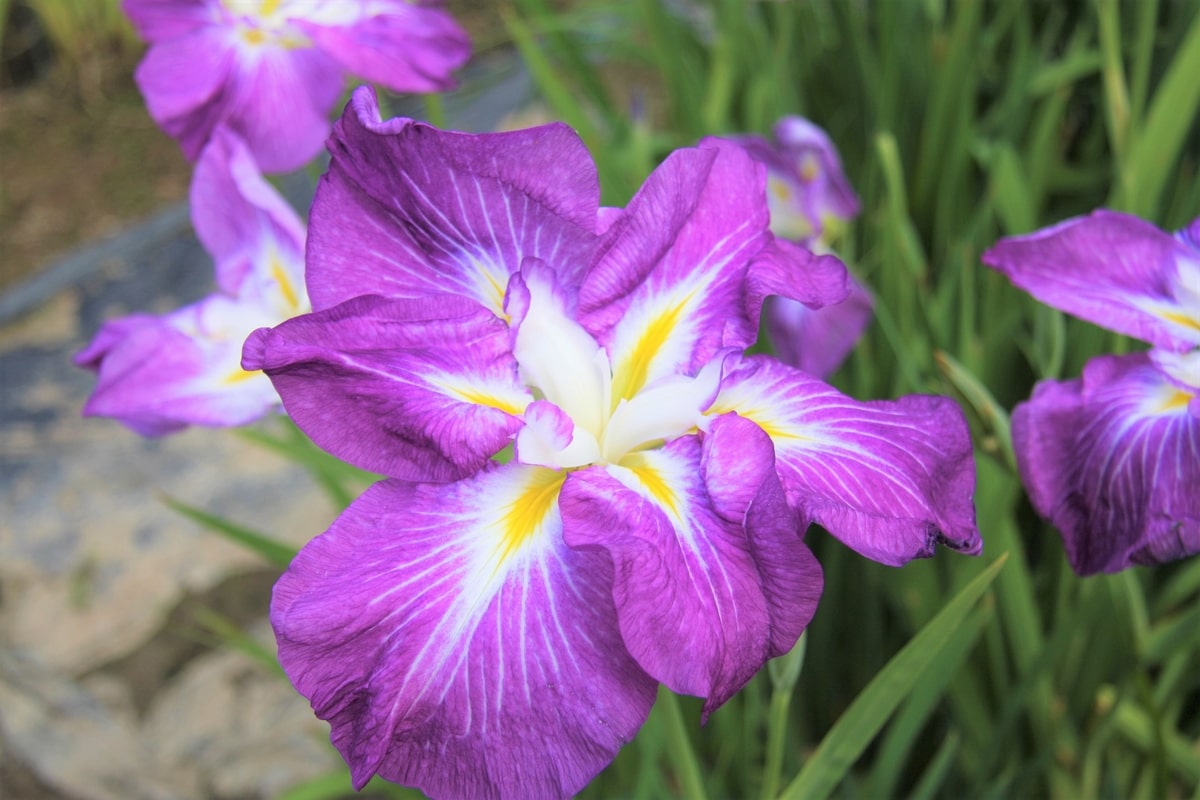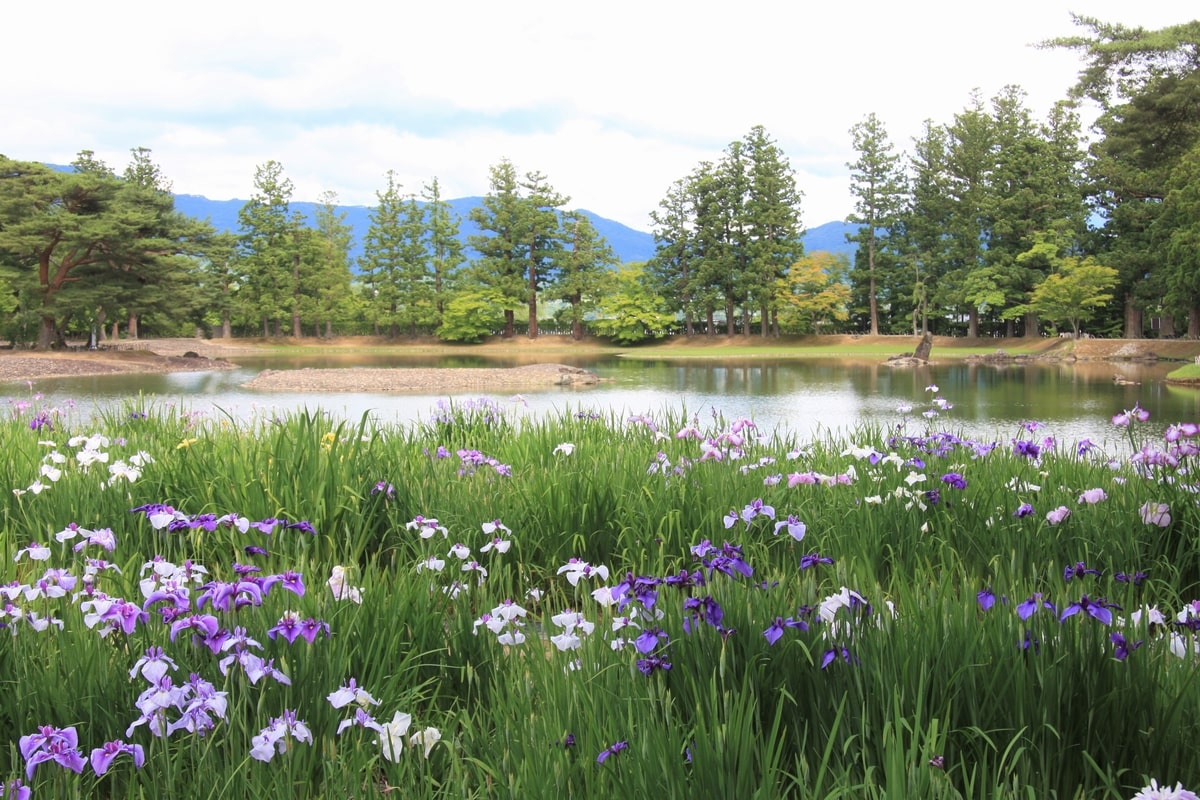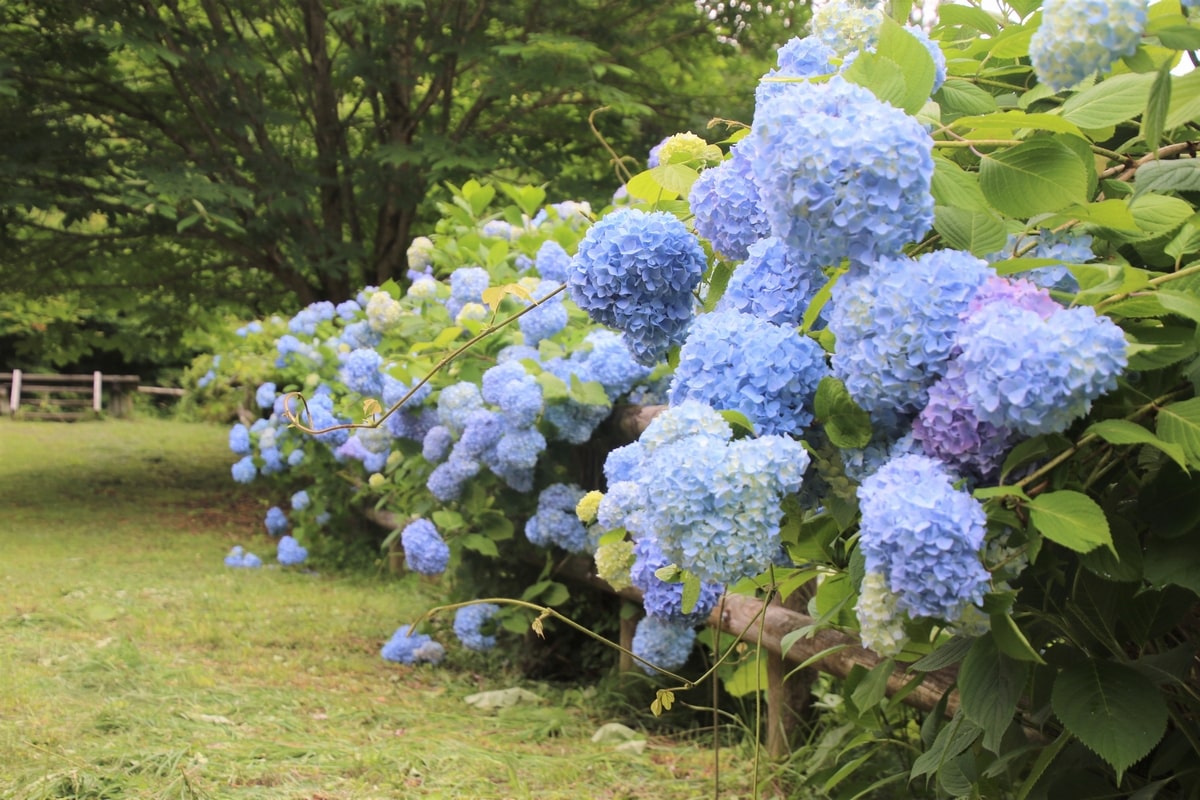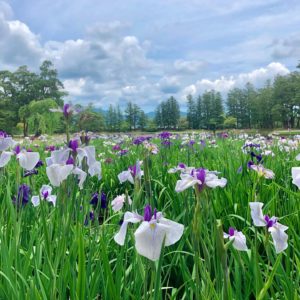June in Bloom - 花咲く平泉の6月
平泉町では、6月中旬から本格的に夏に向かっていきます。日中の温度は30度にも上がり、もう十分暑いですが、日本の夏は湿度もかなり高く、より一層暑さが激しく感じられます。
Around Hiraizumi, the end of May and the start of June is when summer really seems to kick in. Temperatures can climb to the high 80s (or around 30℃) during midday, which is plenty hot already, but combined with the notorious Japanese humidity in summer, it makes for a withering heat.
湿気と共に、カビ・虫・腐朽の恐れがある上に、日本の家や建物はあまり壁が厚くないので、断熱もあまり有効ではありません。夏では暑くなると、中と外の温度には実はあまり差は感じられません。そうなると、外では優しい風が吹く平泉の寺の境内が気持ちいいですね。
Precisely because of issues with the humidity sneaking into the walls, homes and buildings in Japan are rarely built with strong insulation as a priority, so the inside can be just as hot as the outside. At times like these, it starts to seem like a good idea to get outside where the breeze can take the edge off! So, I like to look for excuses to explore nice spots, and some of the flower displays at Hiraizumi’s scenic locations give me just that.
時期に合わせて、いつの間にか町内の花も変わってきます。そして6月の後半はあやめの咲く頃です。世界遺産の一つである毛越寺では、そんなあやめを毎年、300種3万株も植え、境内の花田に咲き誇ります。
It almost seems like month to month, an entirely different complement of blooms appear, and for June, Hiraizumi has irises, exemplified in Motsu-ji Temple’s Iris Fair. Every year, Motsu-ji plants over 30,000 bulbs, of more than 300 varieties, in a series of beds surrounding the Founder’s Hall.
毛越寺の庭園そのもののよう、この花田も歴史のある習慣です。最初は平泉町民の発案であやめを1953年に開山堂前で植えましたが、その翌年には東京の明治神宮が100株を送ってくれて、以来毎年段々広げてきました。
Like much of Motsu-ji’s garden design, there’s also an element of history to the flower beds. The tradition of the iris beds at the temple started in 1953, when Hiraizumi residents voted to contribute to the planting of a small bed in front of the Founder’s Hall. The following year, the venerable Meiji Jingu shrine in Tokyo sent a hundred bulbs to contribute to the garden, a showing of the prestige and pedigree of Hiraizumi’s temples, even more than 50 years before their listing on the world heritage registry.
今では、数百株から始まった花田は生き生きとした紫、白、黄のさざ波のように開山堂の周りに広まって、浄土庭園を背景にした姿は絶景です。あやめ祭りの期間に合わせて、お茶会、写生大会、延年の舞など庭園の風景をクローズアップするイベントもあります。なお、広い境内の風も暑い夏にもさわやかに感じます。
Since their inception, the beds have expanded year after year as the temple continues the tradition, and the flowers have grown from hundreds to tens of thousands, and now form long waves of vivid purple, white, and yellow, which make for an enchanting tableau with the rest of the temple’s scenic garden as a backdrop. There are also events like a tea ceremony, temple rituals, and a historical dance performance during the Fair.
毛越寺の他に、お花を満喫したい方々には隣町である一関市でみちのくあじさい園も6月中、カルミアとあじさいに囲まった散策コースもあります。また、平泉では束稲山のウォーキングトレイルにあるアジサイロードもおすすめします。花を思う存分味わいたい方は、一関で新幹線を降りて森の山影であじさい園を楽しんでから、平泉に泊まってゆっくりと花咲く庭園を回ってはいかがでしょうか。
And of course, there’s even more garden strolling to be had in neighboring Ichinoseki, where the Michinoku Hydrangea Gardens has a walking course available that is surrounded with lovely kalmia flowers, and later in the month, hydrangea. If you’re in the mood for a bit of a hike, you can also see a vibrant corridor of hydrangea along one stretch of the Mt. Tabashine walking trail in Hiraizumi. If you want to take the time to see as much of June in bloom as you can handle, consider getting off the bullet train in Ichinoseki and making a pitstop at the gardens before continuing on to Hiraizumi, where you can stay the night and spend the day touring the temples!





